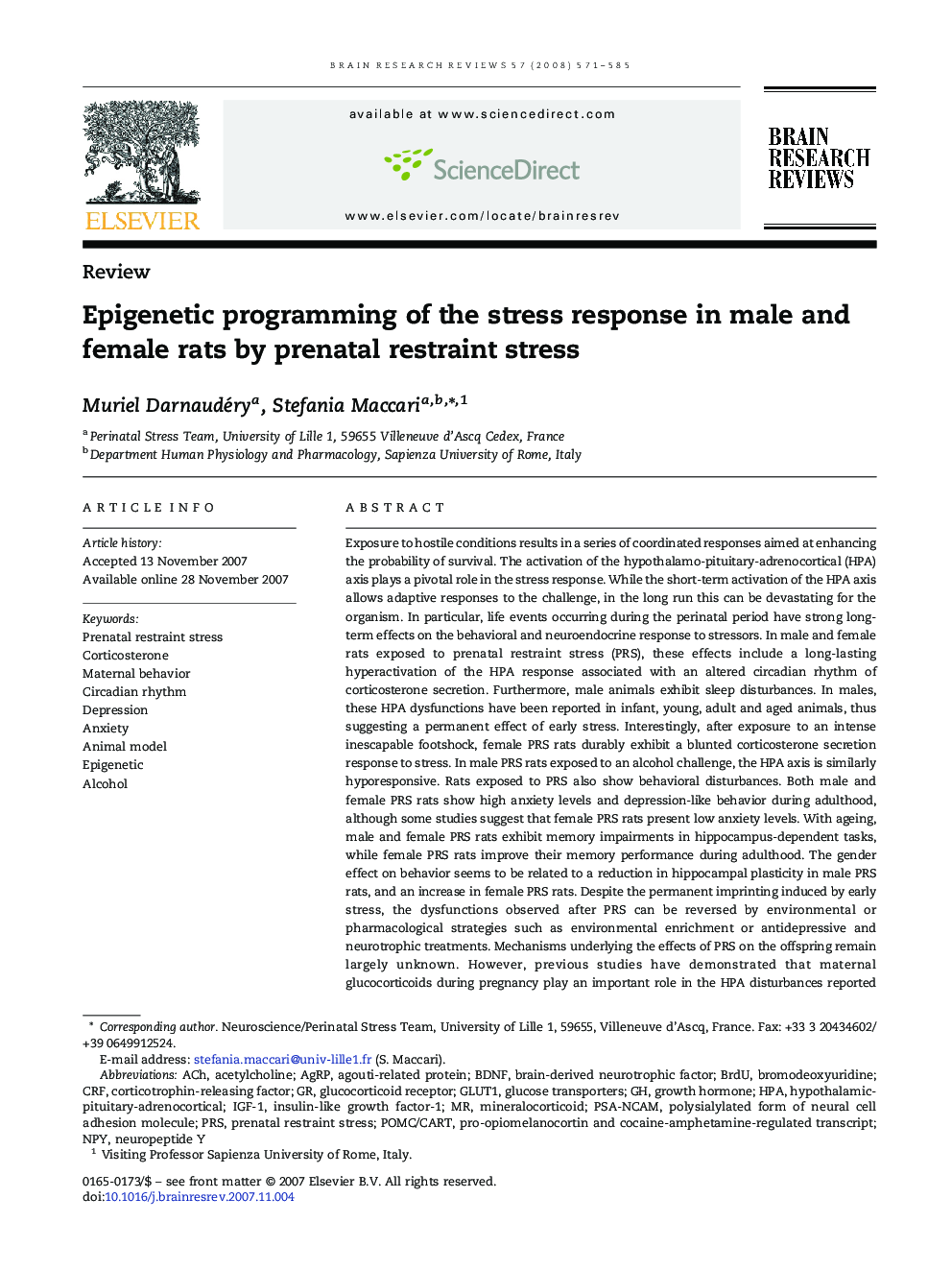| Article ID | Journal | Published Year | Pages | File Type |
|---|---|---|---|---|
| 4333854 | Brain Research Reviews | 2008 | 15 Pages |
Exposure to hostile conditions results in a series of coordinated responses aimed at enhancing the probability of survival. The activation of the hypothalamo-pituitary-adrenocortical (HPA) axis plays a pivotal role in the stress response. While the short-term activation of the HPA axis allows adaptive responses to the challenge, in the long run this can be devastating for the organism. In particular, life events occurring during the perinatal period have strong long-term effects on the behavioral and neuroendocrine response to stressors. In male and female rats exposed to prenatal restraint stress (PRS), these effects include a long-lasting hyperactivation of the HPA response associated with an altered circadian rhythm of corticosterone secretion. Furthermore, male animals exhibit sleep disturbances. In males, these HPA dysfunctions have been reported in infant, young, adult and aged animals, thus suggesting a permanent effect of early stress. Interestingly, after exposure to an intense inescapable footshock, female PRS rats durably exhibit a blunted corticosterone secretion response to stress. In male PRS rats exposed to an alcohol challenge, the HPA axis is similarly hyporesponsive. Rats exposed to PRS also show behavioral disturbances. Both male and female PRS rats show high anxiety levels and depression-like behavior during adulthood, although some studies suggest that female PRS rats present low anxiety levels. With ageing, male and female PRS rats exhibit memory impairments in hippocampus-dependent tasks, while female PRS rats improve their memory performance during adulthood. The gender effect on behavior seems to be related to a reduction in hippocampal plasticity in male PRS rats, and an increase in female PRS rats. Despite the permanent imprinting induced by early stress, the dysfunctions observed after PRS can be reversed by environmental or pharmacological strategies such as environmental enrichment or antidepressive and neurotrophic treatments. Mechanisms underlying the effects of PRS on the offspring remain largely unknown. However, previous studies have demonstrated that maternal glucocorticoids during pregnancy play an important role in the HPA disturbances reported in male offspring. Finally, gestational stress has long-lasting effects on the HPA axis and on behavior in the dams. Alterations in maternal behavior could thus also make a strong contribution to the long-term effects of PRS, through epigenetic mechanisms.
